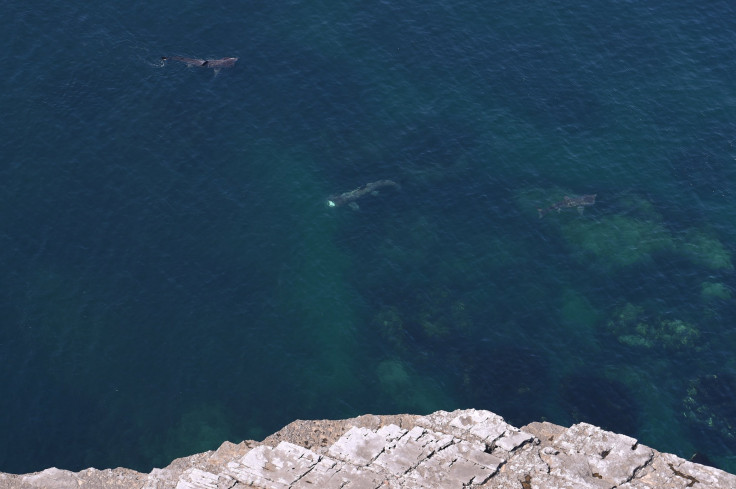Mysterious Giant Shark Spotted In Rare Sighting, Tracked By Satellite

A mysterious giant shark's silhouette was seen in a rare sighting gliding through the waters off western France. Such incidents are a major breakthrough for scientists who are mapping the world’s second largest fish, the basking shark.
Growing to more than 35 feet, the basking shark or Cetorhinus maximus, has been a subject of further research for those eager to help preserve the plankton-eating giant after centuries of overfishing. During the 20th century, global populations of basking shark dropped and the number has not been recovered due to their slow reproduction rates.
These sharks, which have often been mistaken for sea monsters, are more frequently seen during the summer months while in winter they all but vanish from view moving to deeper depths — even down to 3,000 feet below the ocean’s surface.
“It's a shark that remains very mysterious,” Alexandra Rohr of the research group Association of Polar Early Career Scientists (APECS), which is based in France and dedicated to the study of sharks, skates, and rays, told Channel News Asia.
Basking sharks are not predators but feed on planktons and are harmless to humans.
The research group has used new tracking technology to monitor the sharks’ migratory range. Research has also been conducted along with crowd-sourced information from divers, sailors and other members of the public.
Recently, Alain Quemere sighted a basking shark during a fishing trip in the Glenan archipelago off the south coast of Brittany in France. The details were sent to APECS, which allowed a research team to find the shark and fit it with a satellite tracker, according to Channel News Asia.
“I just saw the tip of his fin,” said Quemere. “One moment it grazed the front of the boat, which made me laugh because my boat is barely five and a half meters and the shark was eight.”
The organization has so far tagged four sharks. Some 77 basking sharks were spotted in 2017 from February to September. Most of the 77 sharks were seen in the Bay of Biscay and around 24 were spotted in the Mediterranean.
“You have the impression of seeing a wise old grandfather, it is beautiful,” said Frederic Bassemayousse, a diver and photographer who has spotted the sharks three times.
Basking sharks have been listed by the International Union for the Conservation of Nature as “vulnerable” across the world and “endangered” in the North Pacific and Northeast Atlantic.
© Copyright IBTimes 2025. All rights reserved.





















